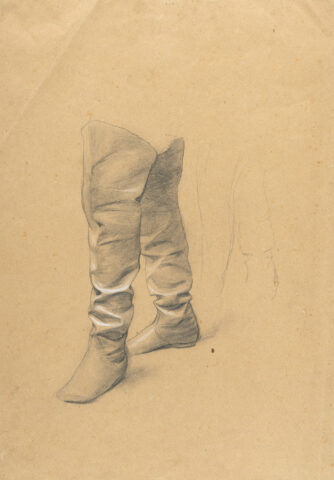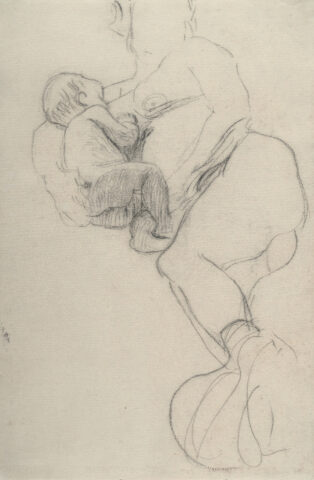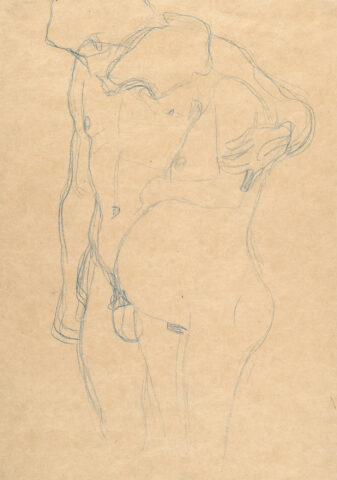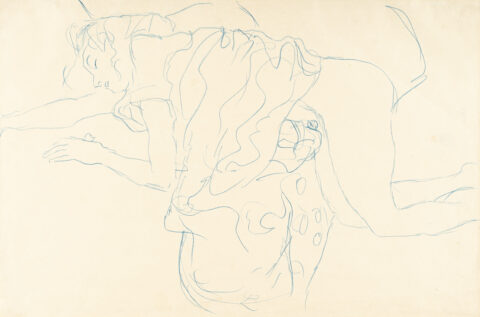
Young woman standing, tying a headscarf
Details
Inscribed “2124” and “39500” by an unknown hand on the reverse. Strobl 215. Exhibitions: Klimt – Schiele – Kokoschka, Musée des Beaux-Arts de Rouen, 1995, cat. no.63; Gustav Klimt. Beethovenfries, Stadthalle Balingen, 2010/11; Klimt and the Women of Vienna’s Golden Age. 1900-1918, Neue Galerie Museum, New York 2016/17. Provenance: estate of Gustav Klimt, with black stamp lower right (Lugt 1575);Klipstein & Kornfeld, Bern; Grace Borgenicht Gallery, New York, until 1994; collection of/estate of Serge Sabarsky, New York, as of 1994; collection of/Foundation Vally Sabarsky, New York.
Description
• Early work by Gustav Klimt
• Sketch for a large-format watercolour painting of the old Burgtheater in Vienna, which was demolished in 1888
• The model was probably the artist’s sister or girlfriend Before the old Burgtheater in Vienna was demolished in favour of a new building in 1888, the city administration decided in 1886 to have the auditorium of the old theater, which was very popular with the Viennese people, depicted by Franz Matsch and Gustav Klimt.
The works should not only reflect the interior, but also and especially the visitors. Matsch and Klimt not only capture the architecture of the building, but they also depict numerous recognisable figures in their works and thus present a virtual inventory of the Viennese cultural landscape at the time. The inspiration for the commission, and possibly also for Klimt’s work, came from a similar painting by the French artist Edouard Dantan, who depicted the auditorium of the Comédie Française at the Salon in Paris with all the greats of the French art scene in 1886. In Gustav Klimt’s version of the auditorium of the old Burgtheater, the stalls, the tiers and, on the left, the box of the imperial family can be seen from the stage. The figures we can identify in the audience are not only artists, but also numerous public figures. Thus we see the Archduke and his wife, various municipal and national politicians, important civil servants of the Viennese empire, writers, singers, painters and art patrons. The scenery is filled with figures, and Klimt also carefully studied the details of the interior for his work. Thanks to a season ticket for the theater, he managed to make dozens of sketches of the interior design and the audience. He also made numerous sketches of individual figures. For the anonymous female figures, Klimt asked women he knew to stand as models. This also includes the “standing young woman, putting on a headscarf” offered here; she is probably one of Klimt’s sisters or girlfriends. In the finished picture she can be found in the third tier, in the seventh box from the left.
* All results incl. buyer’s premium (27%) without VAT. No guarantee, subject to error.
** All post-auction prices excl. buyer's premium and VAT. No guarantee, subject to error.
*** Conditional Sale: The bid was accepted below the limit. Acquisition of the work may still be possible in our post-auction sale.
R = regular taxation
N = differential taxation on works of art which originate from a country outside of the EU
The private or commercial use of images shown on this Website, in particular through duplication or dissemination, is not permitted. All rights reserved.






